I am trying to implement STFT with Pytorch. But the output from the Pytorch implementation is slightly off, when compared with the implementation from Librosa.
Librosa version
import numpy as np
from librosa.core import stft
import matplotlib.pyplot as plt
np.random.seed(3)
y = np.sin(2*np.pi*50*np.linspace(0,10,2048))+np.sin(2*np.pi*20*np.linspace(0,10,2048)) + np.random.normal(scale=1,size=2048)
S_stft = np.abs(stft(y, hop_length=512, n_fft=2048,center=False))
plt.plot(S_stft)
Pytorch version
import torch
from torch.autograd import Variable
from torch.nn.functional import conv1d
from scipy.signal.windows import hann
stride = 512
def create_filters(d,k,low=50,high=6000):
x = np.arange(0, d, 1)
wsin = np.empty((k,1,d), dtype=np.float32)
wcos = np.empty((k,1,d), dtype=np.float32)
start_freq = low
end_freq = high
# num_cycles = start_freq*d/44000.
# scaling_ind = np.log(end_freq/start_freq)/k
window_mask = hann(2048, sym=False) # same as 0.5-0.5*np.cos(2*np.pi*x/(k))
for ind in range(k):
wsin[ind,0,:] = window_mask*np.sin(2*np.pi*ind/k*x)
wcos[ind,0,:] = window_mask*np.cos(2*np.pi*ind/k*x)
return wsin,wcos
wsin, wcos = create_filters(2048,2048)
wsin_var = Variable(torch.from_numpy(wsin), requires_grad=False)
wcos_var = Variable(torch.from_numpy(wcos),requires_grad=False)
network_input = torch.from_numpy(y).float()
network_input = network_input.reshape(1,-1)
zx = np.sqrt(conv1d(network_input[:,None,:], wsin_var, stride=stride).pow(2)+conv1d(network_input[:,None,:], wcos_var, stride=stride).pow(2))
pytorch_Xs = zx.cpu().numpy()
plt.plot(pytorch_Xs[0,:1025,0])
My Question
The two graphs might look the same, but if I check the two outputs with np.allclose, we can see that they are slightly different.
np.allclose(S_stft, pytorch_Xs[0,:1025,0].reshape(1025,1))
output >>> False
Only when I tune up the tolerance to 1e-5, it gives me True result
np.allclose(S_stft, pytorch_Xs[0,:1025,0].reshape(1025,1),atol=1e-5)
output >>> True
What causes the difference in values? Is it because of the data conversion by using torch.from_numpy(y).float()?
I would like to have a difference in value less than 1e-7, 1e-8 is even better.

